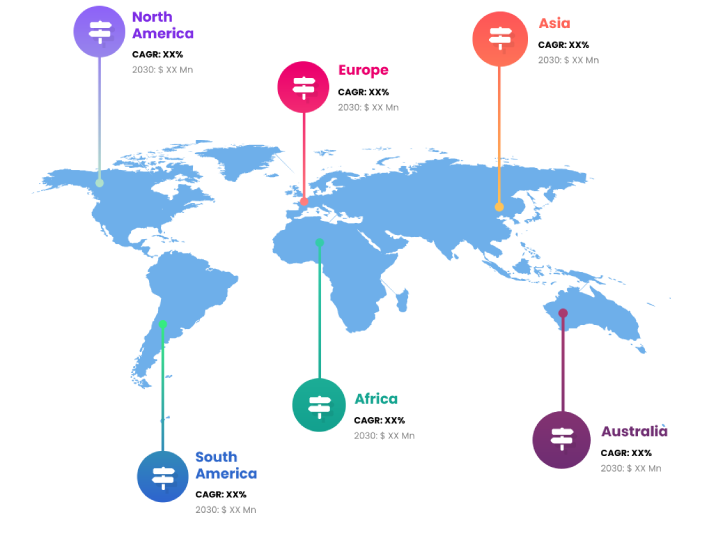
Factors driving the expansion of the Global Head-Up Display Market include an increasing number of car owners, leading to a higher demand for connected vehicles; advancements in technology, such as the integration of satellite navigation with Head-Up Display; and the expansion of the augmented reality market. This study offers a comprehensive analysis of the global head-up display industry. Important market segments, trends, drivers, constraints, the competitive landscape, and other aspects are thoroughly examined in the report.
Instead of having all the important information about the car displayed in different spaces within the vehicle, a Heads Up Display (HUD) puts it all on the windshield, reducing the amount of distraction a driver experiences. Although head-up displays (HUDs) were originally developed for use by the military, technological developments have allowed them to be integrated into civilian vehicles as well. It was the CRT display that the rudimentary HUD mimicked. The subsequent generation made use of a technology often seen in commercial aircraft—solid-state light sources—such as LEDs to back-light LCD projection.
Use of wave-guided optics is employed by the third generation. The fourth one projects a wide variety of media using scanning lasers. Google Glass, the first consumer-market personal HUD, is voice-operated and can do computation, communication, and navigation. As an example, with voice search, the user simply speaks to Glass the query he would type into Google. For more intensive calculations and communication, a smartphone is typically used in conjunction with Glass in personal HUDs. Similar features and wireless characteristics are seen in other HUDs. Sports and medical are just two of the many activities that might benefit from glasses like the Mod, Snow, and Jet from Recon Instrument and the Airwave from Oakley.
The rise of the vehicle head-up display market is being driven by the integration of satellite navigation technology with these devices. Thanks to this integration, navigation instructions may be projected onto vehicle windshields, letting drivers keep their eyes on the road. Drivers are able to access services like Google Maps, make and receive calls, and execute a host of other operations thanks to the combination of gesture control and voice recognition technology. On these screens, drivers may also see the current speed, tyre pressure, and fuel level. You can change the brightness of these satellite navigation head-up displays for both daylight and nighttime driving. They also have the capability to display visuals in numerous colors.
Thanks to advancements in both satellite navigation and head-up displays, wireless remote-control systems that are integrated into car steering wheels have recently been developed. This innovation allows drivers to multitask while maintaining their focus on the road. They can modify the display brightness, volume of the infotainment system, set up navigation, and even take phone calls. Therefore, these car HUDs are painstakingly crafted to meet the needs of drivers by providing virtual image distances, reducing visual clutter and distraction, and guaranteeing the required luminance contrast and user-friendliness for safe driving.
The current state of the art of head-up displays is severely lacking in key areas such as brightness, resolution, luminance, and power efficiency. In order to show high-resolution, color images, modern head-up displays require a very powerful light. In order for the projected images onto windshields to be clearly seen, they also need a high degree of illumination and a wide field of view. Because they project images over vast windshield areas, these displays have a big drawback: they consume a lot of power.
The present head-up display technology is under constant development by automakers and other players in the HUD business. Now, heads-up displays (HUDs) that are GPS-enabled can show warning and error messages on the windshield. As a result of technical developments, manufacturers can now afford HUD without compromising display quality. An ultra-thin augmented reality head-up display (HUD) system that projects vibrant, eye-catching images onto the windshield was created by integrating automation with electromechanical micro mirror-based components. Improvements in holographic projection and head-up displays (HUDs) will allow electric and autonomous vehicle screens to be brighter and make better use of color. It is anticipated that these factors will drive the head-up displa business.
Report Coverage
Global Head Up Display research report categorizes the market for global based on various segments and regions, forecasts revenue growth, and analyzes trends in each submarket. Global Head Up Display report analyses the key growth drivers, opportunities, and challenges influencing the global market. Recent market developments and Head Up Display competitive strategies such as expansion, product launch and development, partnership, merger, and acquisition have been included to draw the competitive landscape in the market. The report strategically identifies and profiles the key Head Up Display market players and analyses their core competencies in each global market sub-segments.
| REPORT ATTRIBUTES | DETAILS |
|---|---|
| Study Period | 2017-2031 |
| Base Year | 2023 |
| Forecast Period | 2023-2031 |
| Historical Period | 2017-2021 |
| Unit | Value (USD Billion) |
| Key Companies Profiled | Penny AB (Sweden), Vazaki Corpcration (Japan), Robert Bosch GMBH (Germany), Denso Corporation (Japan), Micro Vision Inc. (U.S.), BAE Systems Inc. (U.K.), Honeywell Aerospace (U.S.), Visteon Corporation (U.S.), Esterline Technologies Corporation (U.S.), Continental AG (Germany), Nippon Seiki Co. Ltd (Japan), Saab Automobile AB (Sweden). |
| Segments Covered | • By Product |
| Customization Scope | Free report customization (equivalent to up to 3 analyst working days) with purchase. Addition or alteration to country, regional & segment scope |
Key Points Covered in the Report
- Market Revenue of Head Up Display Market from 2021 to 2031.
- Market Forecast for Head Up Display Market from 2021 to 2031.
- Regional Market Share and Revenue from 2021 to 2031.
- Country Market share within region from 2021 to 2031.
- Key Type and Application Revenue and forecast.
- Company Market Share Analysis, Head Up Display competitive scenario, ranking, and detailed company
profiles. - Market driver, restraints, and detailed COVID-19 impact on Head Up Display
Market
Competitive Environment:
The research provides an accurate study of the major organisations and companies operating in the global Head Up Display market, along with a comparative evaluation based on their product portfolios, corporate summaries, geographic reach, business plans, Head Up Display market shares in specific segments, and SWOT analyses. A detailed analysis of the firms' recent news and developments, such as product development, inventions, joint ventures, partnerships, mergers and acquisitions, strategic alliances, and other activities, is also included in the study. This makes it possible to assess the level of market competition as a whole.
List of Major Market Participants
Penny AB (Sweden), Vazaki Corpcration (Japan), Robert Bosch GMBH (Germany), Denso Corporation (Japan), Micro Vision Inc. (U.S.), BAE Systems Inc. (U.K.), Honeywell Aerospace (U.S.), Visteon Corporation (U.S.), Esterline Technologies Corporation (U.S.), Continental AG (Germany), Nippon Seiki Co. Ltd (Japan), Saab Automobile AB (Sweden).
Primary Target Market
- Market Players of Head Up Display
- Investors
- End-users
- Government Authorities
- Consulting And Research Firm
- Venture capitalists
- Third-party knowledge providers
- Value-Added Resellers (VARs)
Market Segment:
This study forecasts global, regional, and country revenue from 2019 to 2031. INFINITIVE DATA EXPERT has segmented the global Head Up Display market based on the below-mentioned segments:
Global Head Up Display Market, By Type
Fixed Mounted
Helmet Mounted
Global Head Up Display market, By Application
Automotive Industry
Military and Civil Aviation Sector
Global Head Up Display Market, By Component
Combiner
Video Generator
Projector Unit
Global Head Up Display market, Regional Analysis
- Europe: Germany, Uk, France, Italy, Spain, Russia, Rest of Europe
- The Asia Pacific: China,Japan,India,South Korea,Australia,Rest of Asia Pacific
- South America: Brazil, Argentina, Rest of South America
- Middle East & Africa: UAE, Saudi Arabia, Qatar, South Africa, Rest of Middle East & Africa
You will get in-depth and extensive head up display market market research and competitor analysis for your business to help you develop more profound insights into the head up display market Market.
Through INFINITIVE Data Expert is a professional Market Research services, I will identify the head up display market market size, demand & opportunities, growth rate, and target audience with a comprehensive analysis of your competitors.



